Last updated: March 2, 2022
Article
Enhancing the Visitor Experience Through Art
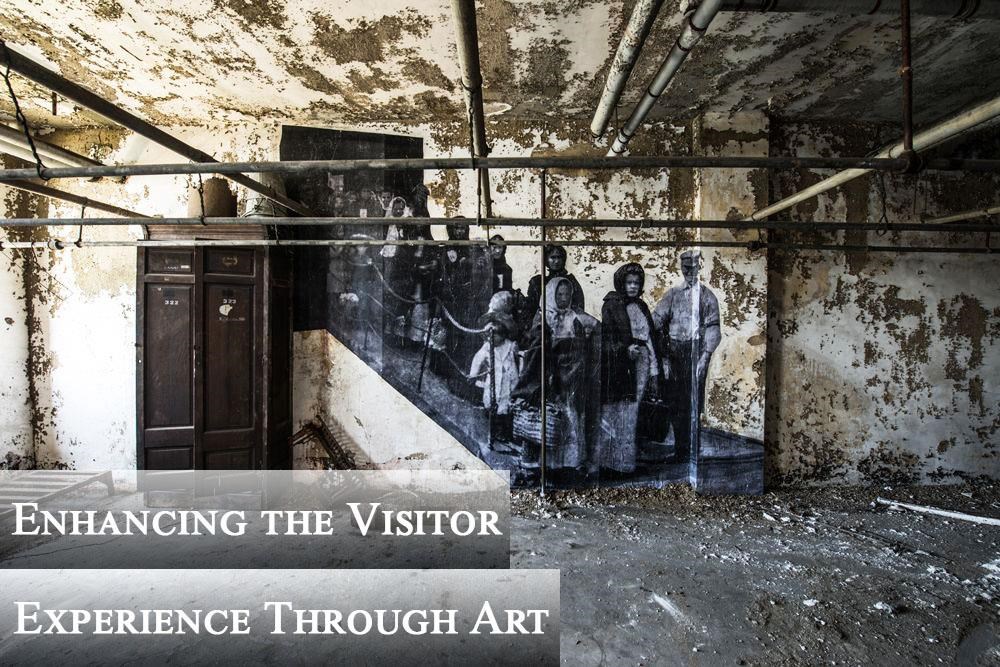
By Elizabeth Brown and Tomás Deza
Two months prior to Aug. 25th, 1916, the day President Woodrow Wilson signed the act to create the National Park Service, America lost Carleton Watkins at the age of 87. A man so often ignored in our oral and written histories, Watkins was the first to transform Yosemite’s iconic sites into depictions of natural splendor during the summer of 1861. These photographs encouraged President Lincoln to sign a bill to preserve Yosemite and gave Americans the opportunity to better understand their natural environment. The photographs did not simply capture a picturesque landscape – they built an enduring vision for land conservation, thus forming the legacy of the National Park Service.
As the National Park Service carries on this legacy into its second century, art has proven to be a useful tool to achieve the agency’s mission of reaching new generations and telling diverse stories. Through creative mediums, artists help National Park Service units and programs (re)activate spaces, engage new audiences, illuminate landscapes and (re)interpret historical events. The National Park Service – Rivers, Trails and Conservation Assistance program has been at the forefront of this next chapter, connecting people to natural and cultural places through art.
Identifying Solutions through Art
Throughout his career as a landscape architect and project specialist for the National Park Service – Rivers, Trails and Conservation Assistance program, Charlie Tracy has been an active proponent of collaborating with artists, especially in the early stages of community planning and assistance projects.
“When I invite artists to the table, it always attracts a broader spectrum of the community; [the projects] move toward greater inclusion, and more meaningful engagement,” Tracy said.
Over the course of his 32-year-career, Tracy has seen artists create platforms for community members to relate to spaces in unprecedented ways – fostering a reframed appreciation and sense of ownership of overlooked and underutilized spaces.
“Often times, when I'm trying to break the ice or initiate public attention to a new area, an artist helps me activate conversations. These are often temporary art projects that draw attention to a forgotten place in a community that maybe no one has thought of before, or help people think about a familiar place in a different way," Tracy said.
This sensibility is what has driven Tracy to continue to push the creative boundaries in these trailblazing collaborations with communities.
The Bronx River Golden Ball
However, Tracy is quick to point out that the role of an artist in community assistance projects was not always so obvious or successful for him. Tracy worked for nearly a decade on a variety of modestly successful artist collaborations before finally reaching a real breakthrough in this participatory work.
In 1999, Tracy and community members recognized that their outreach efforts along the Bronx River were gaining zero traction. Already three years into a project to build a community park on a highly degraded Bronx River site in New York City, the team decided to look toward artists for a solution. Tracy helped recruit the Harries/Héder Collaborative, which was then commissioned by the National Park Service and the Bronx River Working Group.
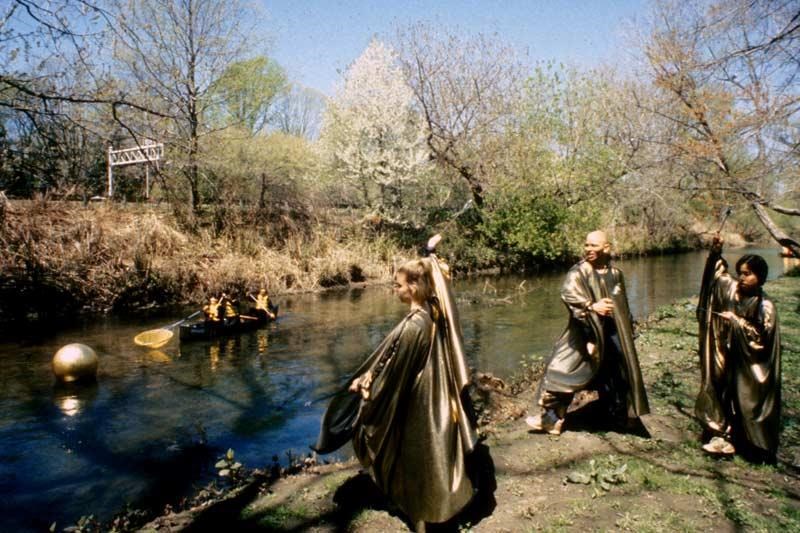
“We had run out of ideas. Harries/Héder suggested floating a golden ball down the river and the general consensus was, ‘it’s just crazy enough, maybe it’ll work!’” Tracy said.
In coordination with Earth Day, organized environmental cleanups and participatory events on the proposed greenway site – the National Park Service, the New York City Department of Parks & Recreation and 27 community groups hosted the first Golden Ball Procession. During the procession, artists in canoes pushed a sparkling golden ball down the Bronx River encouraging community members to follow them along the riverbank where the proposed greenway would run.
“The Golden Ball was the galvanizing moment for community action,” Tracy said.
Over the next five years, previously abandoned and abused areas along the Bronx River saw cleaner and safer conditions, improved water quality levels and the creation of numerous parks.
“That was a real turning point for me in coming to believe in the transformative energy of art – how artists, when you are at the end of your rope, can help you find a way,” Tracy said.
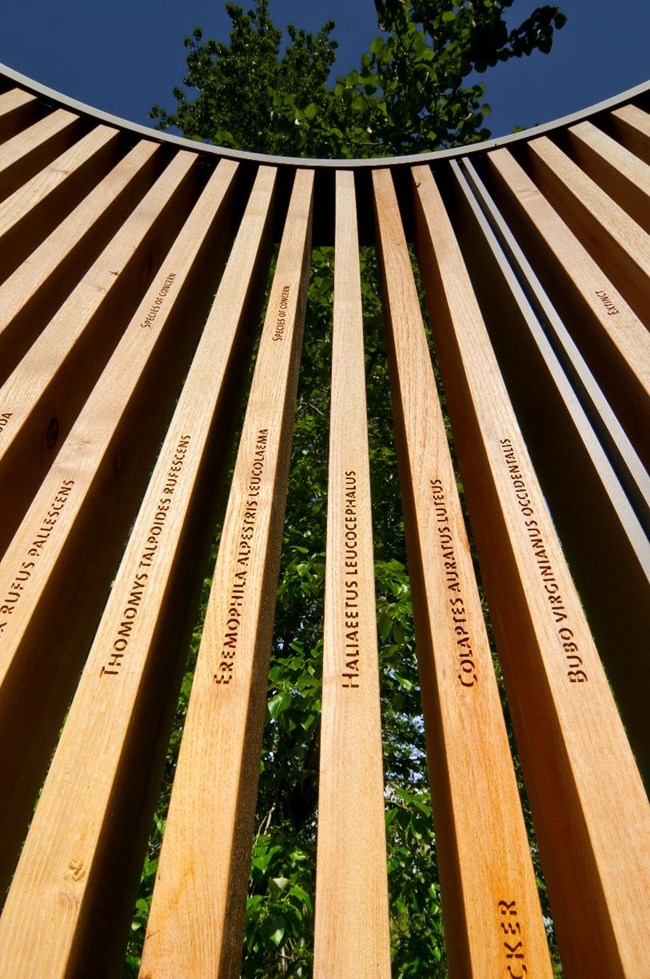
Maya Lin’s “Bird Blind”
Ten years later, the National Park Service applied these same principles to the Sandy River Delta, a multi-use recreation area managed by the US Forest Service located along the Lewis and Clark National Historic Trail. Despite its proximity to downtown Portland, the park unit struggled to attract visitors and was in need of re-energization.
In an effort to tell a story of resilience from the perspective of those whom Lewis and Clark met along the Columbia River, renowned artist and environmentalist Maya Lin was approached to design public art installations to celebrate the upcoming Lewis and Clark Bicentennial. Through the Confluence Project, a nonprofit dedicated to creating public art sites, educational programs and interactive programming, Lin developed “Bird Blind.”
The project served as a creative way of interpreting the natural space and the Lewis and Clark Expedition story. Through its display of 10-foot-tall metal and wooden slats forming a semi-circle, “Bird Blind” educates visitors on the many bird species Lewis and Clark saw at the Sandy River Delta more than two centuries ago.
Through its innovative design, sensitivity to nature and respect for the region’s history, “Bird Blind” has attracted 100,000 visitors annually since its development in 2008.
The Golden Ball Procession and “Bird Blind” share one integral quality – they both leveraged the power of art to attract new audiences, gain community support and revive the vivacity of underutilized natural space.
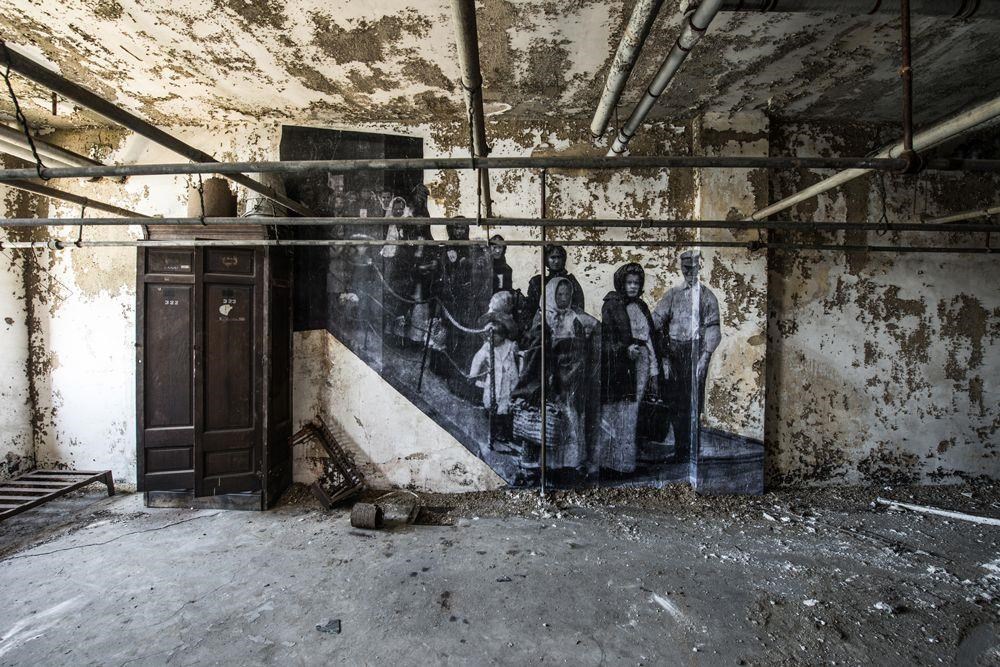
JR’s “Unframed – Ellis Island”
Even parks with high visitation numbers may harness art to activate the untapped potential of the space, reach new audiences and tell new stories. In 2014, French artist, JR, used his signature wheat pasting approach to display dozens of large format photographs in and about the abandoned immigrant hospital wards of Ellis Island, once the largest and most active immigration station in the country, and now part of the Statue of Liberty National Monument in New York City.
The result was a thought-provoking exhibit titled “Unframed – Ellis Island,” consisting of a series of archival images of migrants processed on Ellis Island a century ago.
“This is an example of a park [using art] as a way to activate a place and explore how the park would work with visitors in these forgotten spaces,” Tracy said of the JR exhibit.
Ellis Island welcomes nearly two million visitors a year, an impressive figure for any park attraction. Though increasing visitation was not the exhibit’s main goal, it helped spark conversations concerning how parks should integrate these artistic endeavors into the management of the visitor experience. The exhibit became a tool for visitors to reframe their learned and lived immigrant experiences, and for park management to experiment with the untapped potential of inactive spaces.
A Bright Future Ahead
While the National Park Service - Rivers, Trails and Conservation Assistance program bid an adieu to Tracy, who retired in Sept. 2019, there is a bright future ahead for art in public spaces.
As the National Park Service looks to the future, the challenge of how to forge connections to parks and reach diverse audiences may best be answered through art. This is currently accomplished through programs like the New Bedford Whaling National Historical Park’s Youth Ambassador Program, which engages underserved teens in creating park-themed music videos, which are broadcasted across social media channels.
Park superintendent Jennifer Nersesian believes that the Youth Ambassador Program’s success lies in the creative autonomy it bestows upon youth, adding, that when the “message is crafted by them, it naturally resonates with what is relevant to them and their peers. They can do this in a way we never could.”
At Grand Canyon National Park, youth are similarly continuing the tradition of creatively reaching out to leadership through art that communicates the importance of public lands. At Grand Canyon School, the only school located inside a national park, students have the opportunity to collaborate with the park’s artists-in-residence through workshops and performances, activating learning in new and imaginative ways. Judy Hellmich-Bryan, chief of interpretation at Grand Canyon National Park, understands the exceptional value of this partnership, as it invites both artist and student to “find new meaning in their park experience,” she said.
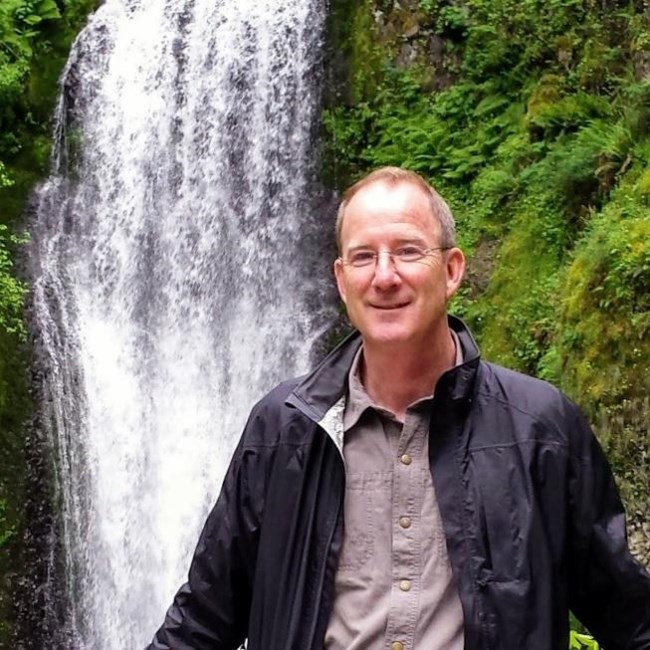
Today, the National Park Service hosts more than 50 Artist-in-Residence programs across the country – providing the public and the artist the opportunity to experience widely recognized parks in an entirely reimagined way.
As Tracy reminds us, “park experiences are much more accessible [when imagined] through creative dance, a sound experience, or a conceptual work that gets you thinking about the difference between the urban space and the natural space.” Art increases the breadth of experiences for both artist and visitor, creating more to see, do and experience. Through the reactivation of forgotten histories, artistry evokes dialogue and contemplation, enabling audiences to find meaning in new experiences.
It is this artistic value that the National Park Service wishes to maximize now, and into the future. As we move forward, we see a landscape of fruitful and untapped potential for the arts. It seems we have barely scratched the creative surface and that is perhaps the most inspiring idea of all.
